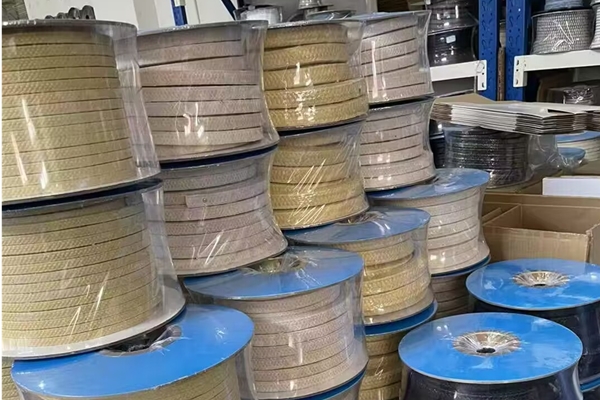What is Gland Packing?
Gland packing, also known as sealing packing, is a sealing material typically made from woven, soft threads. It is designed to fill the space within a sealing chamber, thereby preventing leakage. Gland packing comes in various types, each suitable for specific applications, including aramid, graphite, PTFE (Teflon), water-based, carbon fiber, and more.
Types of Gland Packing
- Asbestos Gland Packing: Made from asbestos yarn lubricated with heat-resistant oil and graphite, this type is suitable for sealing in rotary shafts, reciprocating pistons, or valve stems. It can withstand steam, air, industrial water, and heavy petroleum.
- Graphite Gland Packing: Woven from graphite yarn reinforced with stainless steel, this type of packing offers high flexibility and strength. It is ideal for high-pressure environments and can seal hot water, steam, and various chemical media except strong oxidizers.
- PTFE Gland Packing: Made from pure PTFE fibers, this packing is highly chemically resistant and has excellent self-lubricating properties. It’s suitable for applications where contamination is unacceptable, such as in the chemical, food, pharmaceutical, and paper industries.
- Graphite PTFE Gland Packing: This type is woven from high-quality fibers and is heavily lubricated, making it highly resistant to wear and corrosion. It is ideal for low-pressure valves, rotary equipment, and hydraulic presses.
- Carbon Fiber Gland Packing: Woven from carbonized fibers and impregnated with graphite, this packing is durable and has excellent thermal conductivity. It is suitable for applications with moderate chemical exposure and is often used in centrifugal pumps and mixers.
Considerations for Installing Gland Packing
Before installation, ensure that all previous packing is thoroughly removed, and the stuffing box is cleaned. Check the condition of the stuffing box and other components, replacing any that are damaged.
How to Choose the Right Gland Packing
- Match the Packing to the Operating Conditions: Consider the medium, temperature, and pressure of the application. Use the technical data available to select the most appropriate packing type.
- Correct Packing Size: Calculate the cross-sectional area using the formula:In some cases, you may need a slightly larger cross-section to compensate for equipment wear.
Cutting and Installing Gland Packing
- Cutting: Use appropriate cutting tools to ensure accurate packing lengths. For rotary shafts, a straight 90° cut is recommended, while a 45° cut is preferred for valves.
- Installation: Install one ring at a time, ensuring that each ring is properly seated before installing the next. For valves, stagger the joints of each ring by at least 90° to ensure a good seal.
Adjusting Gland Packing in Pumps and Valves
- Pumps: After installation, tighten the gland nuts by hand, then adjust as necessary after starting the pump. Allow some leakage during the initial run-in to prevent overheating.
- Valves: Follow the manufacturer’s guidelines for torque settings. Operate the valve several times and then re-tighten as needed.
Maintenance and Replacement
Regularly check the adjustment of the packing gland and tighten it if necessary. If the packing cannot be further adjusted, it is time to replace it.
By following these guidelines, you can ensure that your gland packing is installed correctly, providing effective and long-lasting sealing in various industrial applications.




